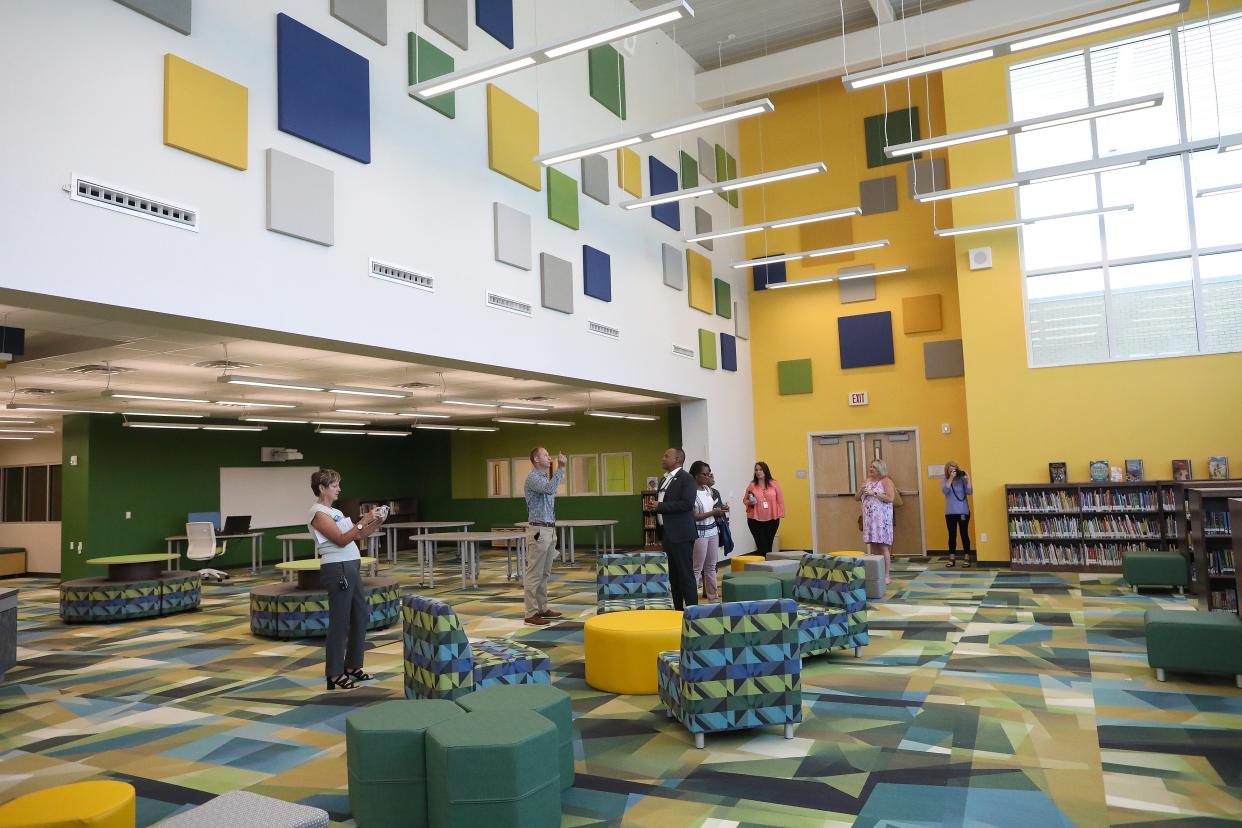Bilingual program at Terwilliger in bad location for bike, bus riders

The dream of bilingual education is finally coming true for kindergarteners in Alachua County who start in August 2022. The dual language immersion magnet program at Terwilliger Elementary School (the new one) will offer instruction split over the course of each day between Spanish and English.
“Be careful what you wish for” is a lesson I take from this chance at the education I want for my son.
If my child is accepted as one of Terwilliger’s new Tortugas, I will need to make some hard choices regarding his active transportation habits. Right now, my 4-year-old son, zoned for Littlewood Elementary School, rides his own bike to a day school. (No, I don’t walk with him on Northwest 16th Avenue. See previous opinion pieces and know that I wasn’t kidding when I wrote that I quit.)
More from Emily Hind:
Stop making excuses for pedestrian deaths and fix the streets
Like big tobacco, auto industry spins lies as it takes lives
Gainesville roads deserve a medal for scares, not shares
Our current cycling commute sticks to relatively sleepy roads, and I know that my son’s bike ride makes it easier for him to sit still indoors. Given these advantages, it is truly galling that medical and educational experts of Alachua County aren’t demanding that city, county and state officials ensure, without exception, that we make it safe for children to ride their bikes or walk to school.
The Terwilliger design, in defiance of the active transportation model, practically requires that children commute by being driven in a vehicle. The school bus ride for children located at the other extreme of Alachua County from Terwilliger may board them around 6:30 a.m., an early hour for 5 and 6 year olds who will study a regular school day.
To spare my son the bus ride, I have been thinking about relocating nearer the magnet. But even for students lucky enough to begin their commute nearer the school, the routine won’t be all that pleasant. The only road that serves Terwilliger, Parker Road, is zoned outside of school hours at 45 mph. Past the 45-mph section of Parker Road, the speed limit is 55 mph. The ongoing pile of dead people created by Gainesville traffic at slower speeds attests to the dangers posed by this highway.
The closest neighborhood to Terwilliger is Oakmont, which according to Zillow has a walkability score of 0. More walkable (and shady) developments, like those of Tioga and Haile, to the west and east of Terwilliger respectively, advertise themselves as having access to trails, but no paved safe pathway is consistently laid out from those neighborhoods to the school. That is to say, beyond the unshaded Oakmont development, there is no continuous, paved, protected walking or cycling path to Terwilliger.
If I am able to bike with my son to Terwilliger, provided that he is accepted and provided that we somehow find a safe route, the possibility of leaving my bike behind and getting myself to work at the University of Florida by bus seems unlikely. The only UF transit stop in the area passes through Haile Village Center, some five miles from Terwilliger by road.
Moreover, the lack of bus transport for non-elementary school students poses a head-scratcher for any UF student who might earn university credit by working with the bilingual program. The wealth segregation implied by this arrangement defies the ideal of equal opportunity.
We need active transportation paths and sustainable transit routes to and from our schools and workplaces. In the long run, walking and cycling, not to mention bus riding, cost less than requiring everyone to own personal vehicles.
To reward those who remove themselves from car traffic, we need to ensure the safety, punctuality and dignity of pedestrians, cyclists and bus riders. Paved pathways safely removed from highway speeds and shaded shuttle stops convenient to hubs like Terwilliger and UF, with bus schedules that accommodate working parents, are just the beginning of a livable Alachua County.
Let’s leave the car lane to the professionals like the plumbers and electricians — those who really need a vehicle. A smart road encourages commuters who can ride a bus onto one, with such enticements as a dedicated bus lane. Bus lanes are the right fix for the current time-suck of congestion.
Please don’t just read this opinion piece and nod off. We don’t have time to keep doubling down on infrastructure that has proven itself, year after year, to be deadly, costly and anything but fun. A new set of kindergartners needs us to stop doing what never worked for them.
Emily Hind is a professor of Spanish at UF.
Join the conversation
Send a letter to the editor (up to 200 words) to letters@gainesville.com. Letters must include the writer's full name and city of residence. Additional guidelines for submitting letters and longer guest columns can be found at bit.ly/sunopinionguidelines.
Journalism matters. Your support matters.
Get a digital subscription to the Gainesville Sun. Includes must-see content on Gainesville.com and Gatorsports.com, breaking news and updates on all your devices, and access to the Gainesville.com ePaper. Visit www.gainesville.com/subscribenow to sign up.
This article originally appeared on The Gainesville Sun: Emily Hind: Terwilliger Elementary bad location for bike, bus riders

